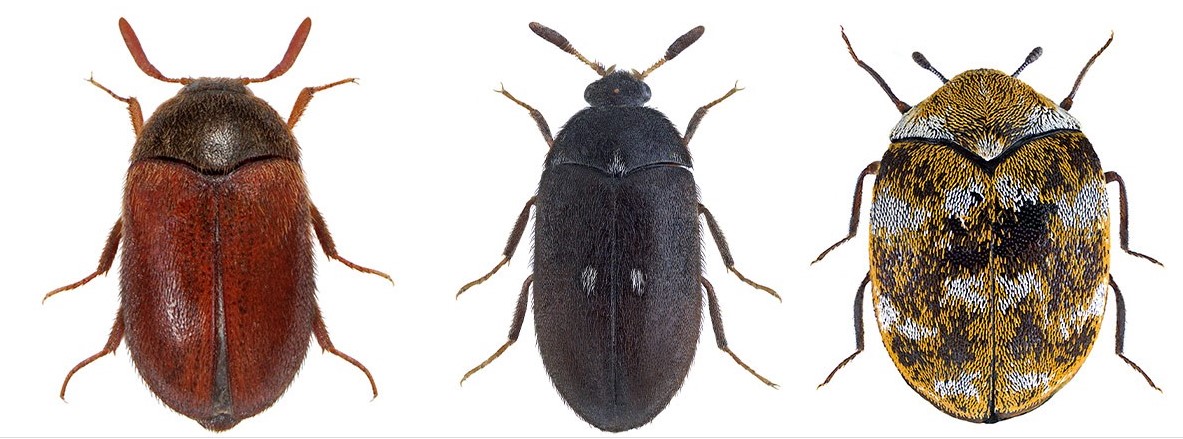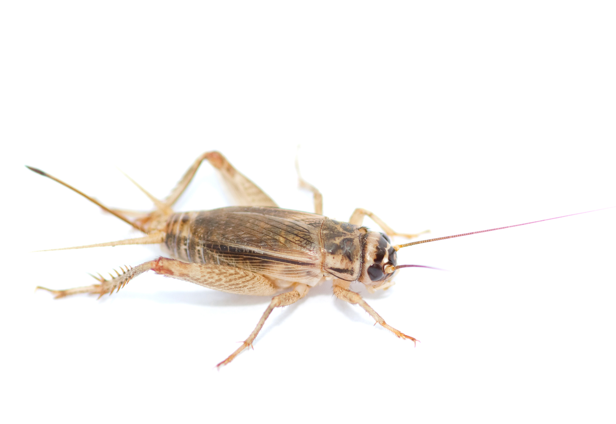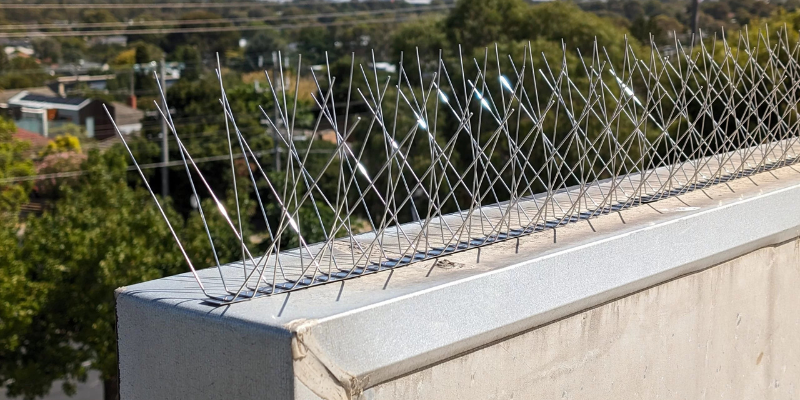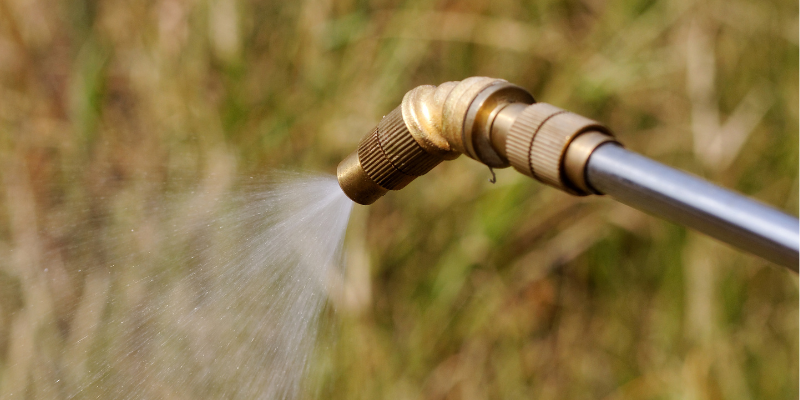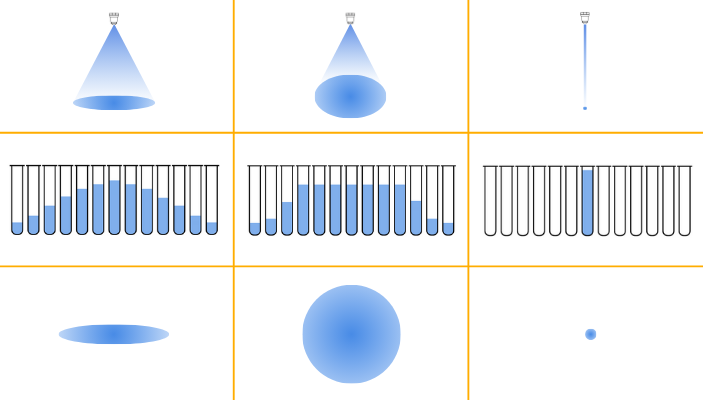St Andrew's Cross Spider
St Andrew's Cross Spider
Scientific Name: Argiope spp.
How to identify a St Andrew's Cross Spider
St Andrew's Cross Spiders are named for their bright web decorations - zig-zag ribbons of bluish-white silk that form a full or partial cross through the centre of the orb web. Females have a silvery carapace and a silver, yellow, red and black banded upper abdomen with two longitudinal yellow stripes below. The spider sits with the legs in pairs. The brown and cream coloured males are smaller than females.
The cream-coloured young spiders make a circular stabilimentum (like a white silk doily) that disguises them well and may also act as a sunshade. As the spider grows the 'doily' is gradually transformed into a 'cross'.
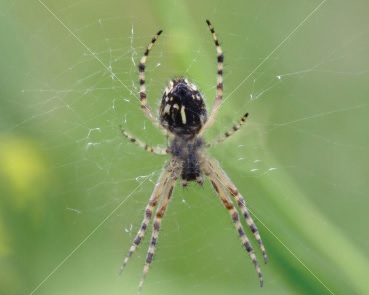
Where are St Andrew's Cross Spider commonly found?
The St Andrew's Cross Spiders build medium-sized orb webs, occupied day and night, on low shrubby vegetation.
The role of the cross-like web decoration, called the stabilimentum, has long been a puzzle. At first thought to strengthen or 'stabilise' the web, more recent ideas associate it with capturing prey or avoiding predators. The ribbon-like silk reflects ultra-violet light strongly. Such light is attractive to flying insects, which use it to locate food sources like flowers and to navigate through openings in the vegetation. If the stabilimentum silk attracts insects it may increase the web's prey catching efficiency. The silk decoration could also make the web and its owner more obvious to day-active predators like birds and wasps. However, the variability of the shape of the cross decoration (a complete cross; a partial cross with from one to three arms; or sometimes absent altogether) could make web recognition confusing for the predator. Another possibility is that the stabilimentum advertises a warning to predators like birds to stay away - after diving through the sticky web, the effort required to clean silk off plumage may deter birds from trying again.
Why are St Andrew's Cross Spider considered a pest?
The bite of the St Andrew's Cross Spider is of low risk to humans. St Andrews Cross Spiders are a non-aggressive group of spiders. There are no reported instances of any serious consequences of human contact with these spiders except the fright of walking into their large web and the spider crawling over the person involved.
St Andrew's Cross Spiders are spectacular and may be quite alarming if one is not familiar with them, however, they are not dangerous. They might bite if grabbed, however, other than for defence they have no interest in biting humans. Their venom is not regarded as a serious medical problem for humans.
What is the biology and lifecycle of a St Andrew's Cross spider?
Mating occurs from summer to autumn and can be hazardous for the small male St Andrew's Cross Spiders. One or more males sit in the upper parts of the web - some may be missing legs, survivors of encounters with unreceptive females. The male constructs a mating thread within the web, onto which it attracts a receptive female by vibrating the thread. The female suspends its pear-shaped egg sac in a network of threads, often among leaves where the sac's greenish silk disguises it. Despite this, the egg sacs are often the target of parasitic wasps and flies.
Management Tips for St Andrew's Cross Spider
There are many species of “garden spider” such as the St. Andrew’s Cross spider. Most of these spiders build their webs in bushes or trees, being particularly annoying when their webs cross pathways around the home. It is not really practical or desirable to spray the whole garden for spiders, so prevention is the way to go here. The best option here is to remove plants from the exterior wall of the house and adjacent to paths and walkways. If you wish to leave the plants in place, make sure they are well trimmed back.
General Spider Prevention Tips
-
Keeping garden beds and rubbish away from the edge of the house will significantly reduce the spider population.
-
If garden beds next to the house are kept in place, it is important to keeping vegetation trimmed back from the edge of the house and paths.
-
Make sure insect screens and draft excluders are in good repair and well fitting
-
Keep clothes and shoes off the floor to reduce spider hiding places.
General Spider Control Tips
-
The best treatment for web-building spiders is to spray their webs and hiding places with an insecticide (ready to use pump back or aerosol). The key tip to get the best performance is to wait a day or two after spraying before brushing down any webs. This ensures the spiders will have picked up a lethal does of insecticide (by walking on the web) and by using a brush (rather than hose), you can ensure the insecticide remains in place to prevent new spiders taking up residence.
-
To prevent web-building spiders take up residence in the first place, spraying around doors, windows and vents, as well as under eaves and guttering delivers excellent results. As these spots tend to be sheltered from sun and rain, the treatment can last many months.
-
It is a lot more difficult to prevent running spiders entering the home. Carrying out a preventative spray around the perimeter of the home and any openings will have some benefit, although running spiders often walk on the tips of their legs, preventing them from picking up a lethal dose of insecticide. However, if you carry out a preventative treatment for web-building spiders and other insects, the numbers of running spiders will be greatly reduced, as there will be little prey for them to feed on.
-
Even with the best control program the occasional spider may get in. A crawling insect aerosol should be kept on hand to spray the occasional unwanted spider. Ensure the spider receives a good dose and keep your distance.



